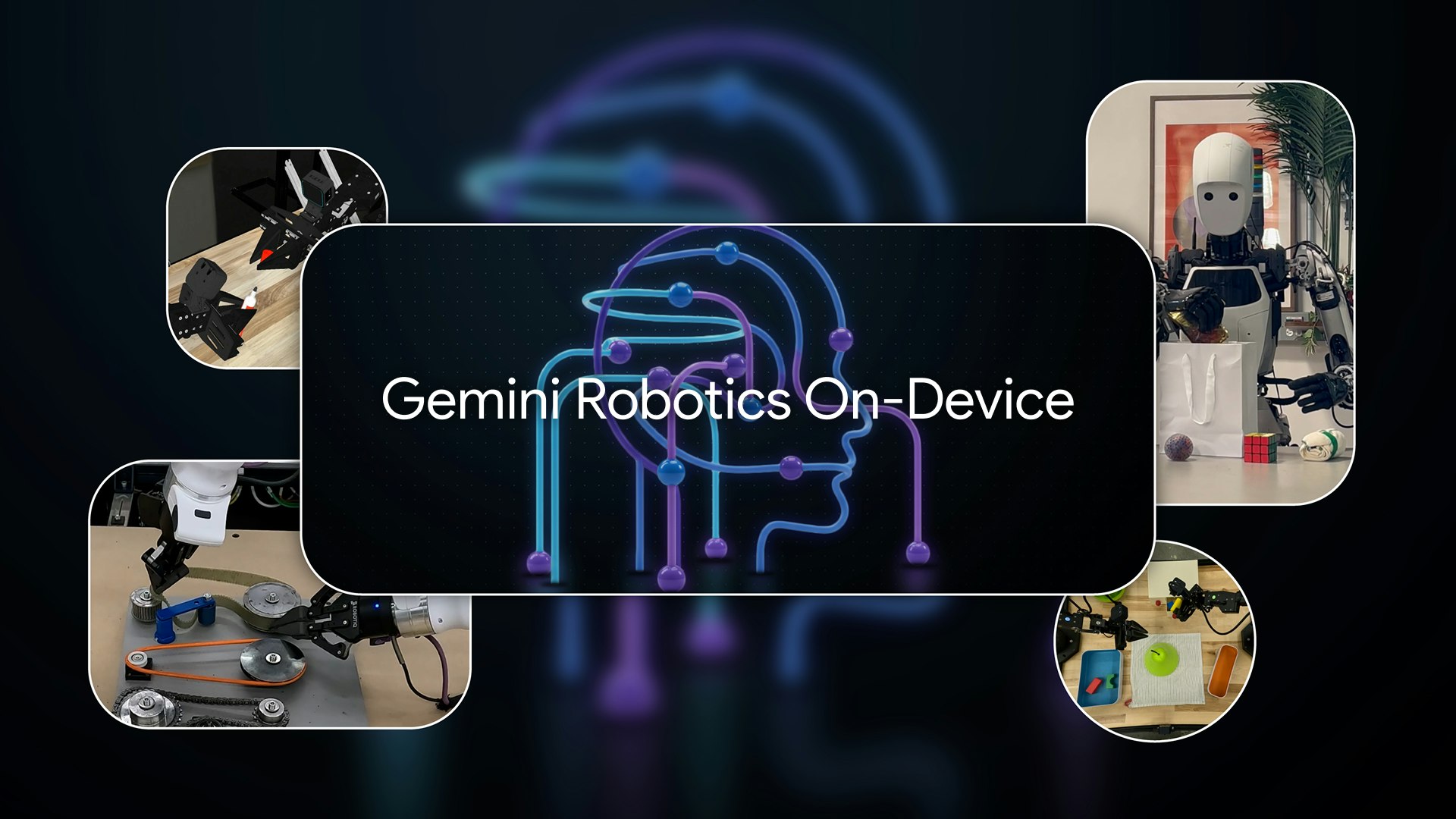Table of Contents
Overview
Google DeepMind’s Gemini Robotics On-Device represents a paradigm shift in robotic AI, enabling sophisticated autonomous operation without cloud dependency. Announced on June 24, 2025, this breakthrough Vision–Language–Action model brings the full power of Gemini 2.0’s multimodal reasoning directly to robotic hardware. Building upon the success of the original Gemini Robotics model launched in March 2025, the on-device variant addresses critical industry needs for low-latency, privacy-preserving robotics applications while maintaining near-parity performance with cloud-based systems. This advancement positions Google at the forefront of the rapidly growing on-device AI market, projected to reach \$36.64 billion by 2030.
Key Features
- Complete offline autonomy: Operates entirely on local hardware without internet connectivity, ensuring consistent performance in remote or sensitive environments
- Advanced VLA architecture: Seamlessly integrates visual perception, natural language understanding, and precise motor control in a unified neural framework
- Exceptional manipulation dexterity: Executes complex bimanual tasks including garment folding, zipper operation, card drawing, and industrial assembly with human-level precision
- Rapid task generalization: Adapts to new scenarios with as few as 50–100 demonstrations, demonstrating remarkable transfer learning capabilities
- First-in-class fine-tuning support: Google’s inaugural VLA model offering customization for specific applications and hardware platforms
- Multi-embodiment compatibility: Successfully adapted from ALOHA training robots to Franka FR3 industrial arms and Apptronik’s Apollo humanoid
- Real-time inference optimization: Achieves sub-100 ms response times through efficient on-device processing architectures
How It Works
The system operates through a sophisticated compression and optimization pipeline that distills Gemini 2.0’s capabilities into edge-compatible architectures. The model processes multimodal inputs—including RGB camera feeds, depth sensors, and natural language commands—through specialized transformer encoders. Visual data undergoes real-time scene understanding while language inputs are parsed for task specification and constraint identification. The integrated action decoder generates precise motor commands for dual-arm manipulation, maintaining smooth trajectories and adaptive grip control. Advanced safety mechanisms monitor execution in real time, with semantic safety validation through Google’s Live API and physical safety through low-level control interfaces.
Use Cases
Gemini Robotics On-Device enables transformative applications across diverse industries:
- Industrial automation: Precision manufacturing, quality inspection, and flexible assembly line adaptation without network infrastructure dependencies
- Healthcare robotics: Patient care assistance, surgical support, and medical device operation in sterile, secure environments with strict data privacy requirements
- Logistics and warehousing: Autonomous sorting, package handling, and inventory management in facilities with limited connectivity or high-security protocols
- Research and exploration: Scientific data collection, environmental monitoring, and hazardous area operations where cloud connectivity is impossible
- Home and service robotics: Domestic assistance, elderly care, and personal service applications prioritizing user privacy and consistent operation
Pros \& Cons
Advantages
- Zero latency dependency: Eliminates network-induced delays for time-critical applications and ensures consistent performance regardless of connectivity
- Enhanced data privacy: Processes all sensory and operational data locally, meeting stringent privacy requirements for healthcare, defense, and personal applications
- Unprecedented adaptability: Demonstrates remarkable generalization across robot embodiments and task domains with minimal retraining requirements
- Production-ready reliability: Tested extensively across challenging manipulation tasks with performance metrics approaching cloud-based systems
Disadvantages
- Hardware resource constraints: Performance ultimately limited by onboard computing capacity, potentially restricting the complexity of simultaneous operations
- Specialized deployment requirements: Integration complexity varies significantly across different robotic platforms and may require expert technical implementation
- Limited initial availability: Currently restricted to Google’s trusted tester program, limiting immediate widespread adoption
- Focused application scope: Optimized primarily for manipulation tasks rather than navigation, planning, or multi-robot coordination scenarios
How Does It Compare?
- NVIDIA Isaac and Groot: While NVIDIA’s platforms offer comprehensive simulation and training environments, they typically require substantial cloud infrastructure. Gemini Robotics On-Device provides comparable intelligence entirely on local hardware.
- Boston Dynamics AI: Boston Dynamics excels in dynamic locomotion and navigation but remains proprietary and hardware-specific. Google’s approach offers broader adaptability across diverse robot embodiments with open development pathways.
- Physical Intelligence π0: π0 demonstrates impressive generalist capabilities but requires cloud connectivity for optimal performance. Gemini Robotics On-Device matches this versatility while operating completely offline.
- Figure AI and Tesla Bot: These humanoid platforms integrate custom AI stacks but with limited third-party adaptability. Google’s model offers superior flexibility for researchers and developers across multiple hardware platforms.
Final Thoughts
Gemini Robotics On-Device represents a watershed moment in robotics AI, successfully bridging the gap between cloud-scale intelligence and edge-device constraints. By achieving near-cloud parity performance in a local execution environment, Google has addressed fundamental barriers to widespread robotics deployment in privacy-sensitive, latency-critical, and connectivity-limited applications. The combination of exceptional task generalization, multi-embodiment adaptability, and Google’s commitment to responsible AI development positions this technology as a cornerstone for the next generation of autonomous systems. For organizations prioritizing data sovereignty, operational reliability, and adaptive intelligence, this breakthrough offers an unprecedented opportunity to deploy truly autonomous robotic systems.
